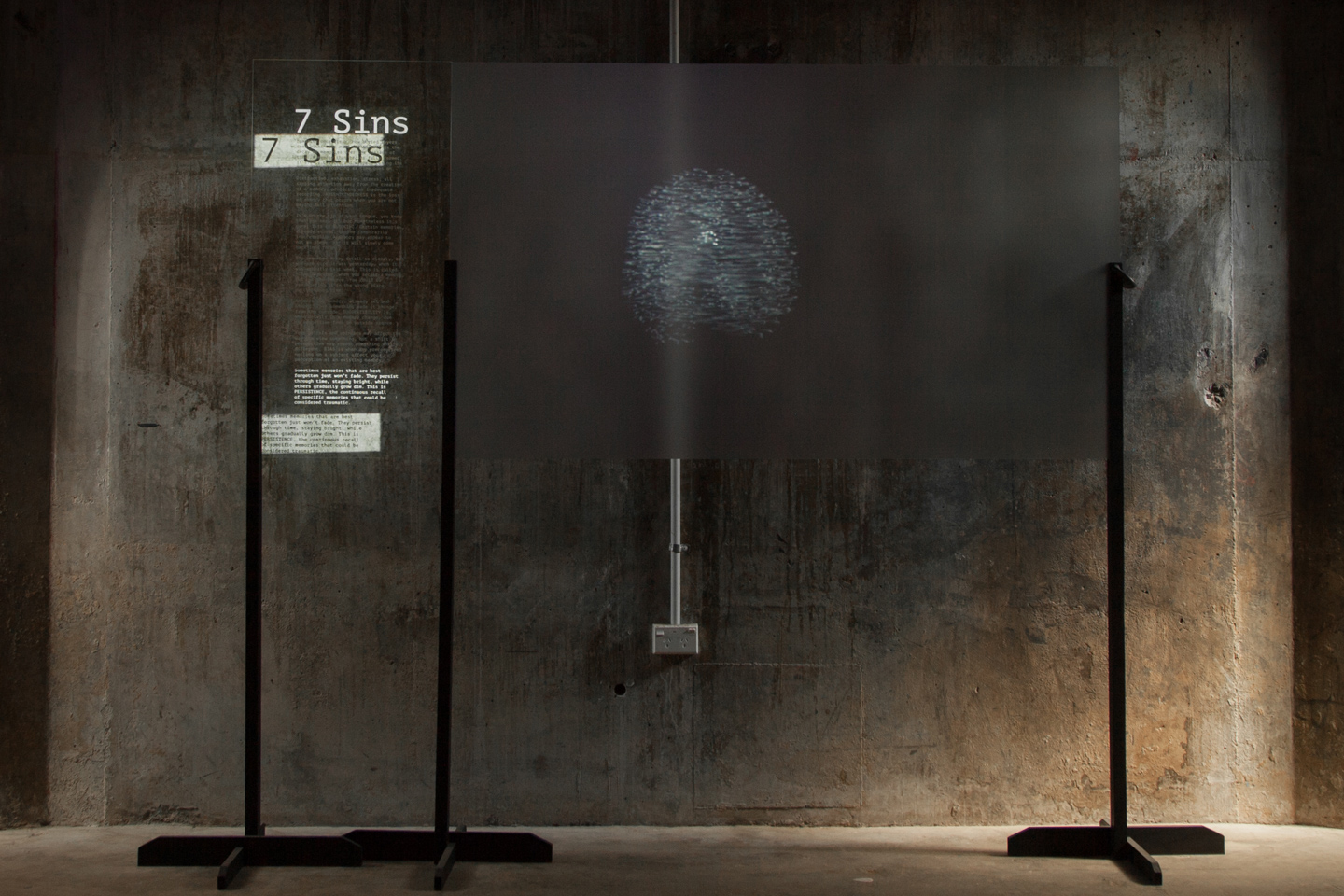Hot New Things — William Anselmi, Whitecliffe
Our 2017 Hot New Things series continues today – an opportunity to profile a selection of some of the top design grads coming out of our tertiary institutions. This week we speak with William Anselmi from Whitecliffe College of Arts & Design.
William Anselmi
Bachelor of Fine Arts, Graphic Design Major
Whitecliffe


Hi William, you completed your full time studies at the end of 2016. Can you tell us what your final year’s project was about and what you focussed on.
My final grad project last year, Seven Sins, is a digital interpretation of the book The Seven Sins of Memory by Daniel Schacter. This book is a psychology book that looks at seven different types of memory loss. My project takes the subject of this book and uses 3D generative design processes to make visual metaphors that are specific to each type of memory loss described in the book; Absentmindedness, Transience, Blocking, Misattribution, Suggestibility, Bias and Persistence. The generative processes are individually unique to each type of memory loss, and interpret it in an entirely visual manner. My project utilised universal visual clues and symbolic design choices to make each type of memory loss easily understandable.
How has what you’ve recently been working on influenced your design process, and what momentum does it bring to your practice?
The design processes that have been necessary to create the work for this project have helped me to develop the skill to conceptualise and generate content quickly and efficiently. This skill, alongside the new software I was forced to learn, has helped and encouraged me to embrace experimental processes and design methods. This has served as a starting point for figuring out what direction I wanted to take both my subject, and my methods.





What were some of your most exciting discoveries?
For me, some of the most exciting discoveries were learning how to create visuals using TouchDesigner. This software allowed me to quickly generate simple 3D geometry and effects that would otherwise have been very time consuming and slow to render, compared to other 3D software. The software itself makes experimentation and idea generation very quick and easy, which allowed me to execute many different ideas and many iterations of an idea in a short amount of time.
And some of your challenges?
The processes of learning a new software in depth, enough to actually use it effectively for the entirety of my project, was definitely a major challenge. I had used the software briefly in the previous year for the sake of experimentation, but learning about all of the advanced functions and processes of the software, while simultaneously generating ideas and executing those ideas, was very difficult in the beginning.
What did you love doing most?
Probably the challenge of studying a specific memory loss; figuring out the important key factors in each, deciding how it can be best interpreted using generative processes and the way in which it could communicate the basic mechanics of the specific memory loss. It took multiple iterations and several ways of interpreting the source material for each subject before I was happy with the outcomes.
Where do you go to find inspiration (websites, resources, designers, etc)?
Some of my favourite places online for inspiration are blogs like CreativeApplications.Net, Spoon & Tamago, grafik.net, and any many other design blogs I happen to find myself on. I also always look forward any design events I can get to, especially the Semi-Permanent design conference.
Quite often though, some of the most inspiring work that I find, is shared through the people around me. My classmates and other friends, who share similar interests in various types of design, always manage to introduce me to the newest and most inspirational design ideas. Having classmates and friends around that know what you’re interested in definitely helps a lot. Even with all the research and exploring done for my projects, having people refer you to interesting projects or topics that you wouldn’t have even initially considered was definitely invaluable to me.
Why did you choose to study at Whitecliffe, and what do you feel you can take away now that you’ve completed your course?
When I left high school, my first choice for where I wanted to study Graphic Design was AUT. Unfortunately, I didn’t get accepted into that course and my choice of Whitecliffe was secondary, but the further I got into my time studying there, the more I felt it was actually a better choice for me. The class environment felt much more intimate, and the small number of students allowed us all to make strong relationships over the 3 years we spent working together. Having this connection with my classmates and tutors made discussions and critiques with each other much easier and more effective.
Where to next for you? What does 2017 hold?
At the moment my main focus is figuring out where I want to be, and saving the money I need to get there. Currently, I’m planning on spending some time in New York later this year, potentially furthering my creative knowledge doing a one-year photography course, but if not, just soaking up all the creative energy and banking some inspiration for the years to come.
See more from William at:
www.williamanselmi.com
or contact him directly via: williamanselmi.design@gmail.com
To find out more about Whitecliffe College of Arts & Design and the courses they offer visit: www.whitecliffe.ac.nz




